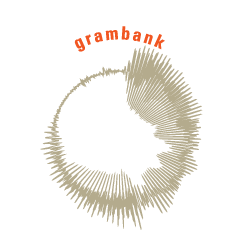About Grambank

Grambank was constructed in an international collaboration between the Max Planck institutes in Leipzig and Nijmegen, the Australian National University, the University of Auckland, Harvard University, Yale University, the University of Turku, Kiel University, Uppsala University, SOAS, the Endangered Language Documentation Programme, and over a hundred scholars from around the world. Grambank is designed to be used to investigate the global distribution of features, language universals, functional dependencies, language prehistory and interactions between language, cognition, culture and environment. The Grambank database currently covers 2,467 language varieties, capturing a wide range of grammatical phenomena in 195 features, from word order to verbal tense, nominal plurals, and many other well-studied comparative linguistic variables. Grambank's coverage spans 215 different language families and 101 isolates from all inhabited continents. The aim is for Grambank to ultimately cover all languages for which a grammar or sketch grammar exists. Grambank is part of Glottobank, a research consortium that involves work on complementary databases of lexical data, paradigms, numerals and sound patterns in the world's languages. Grambank can be used in concert with other databases, such as those in Glottobank and D-PLACE, to deepen our understanding of our history and communicative capabilities.
Grambank database
Grambank is hosted as part of our CLLD family here.
Grambank Team
Project Leader:
Project Coordinator:
Database Managers:
DLCE collaborators:
External collaborators:
- Quentin Atkinson (Auckland)
- Damián Blasi (Harvard)
- Simon Greenhill (Auckland)
- Hannah Haynie (Boulder)
- Annemarie Verkerk (Saarbrücken)
- Russell Dinnage
- Sam Passmore
- Miina Norvik
- Anna Graff
- Michael Dunn
- Ger Reesink
Topic experts (“patrons”):
- Jeremy Collins
- Hannah Haynie
- Jakob Lesage
- Jay Latarche
- Hedvig Skirgård
- Alena Witzlack-Makarevich
- Harald Hammarström
- Tobias Weber
& The rest of the Grambank consortium
Grambank Publications
Shcherbakova, O., and Allassonnière-Tang, M. (2024) Evolutionary pathways of complexity in gender systems. Journal of Language Evolution: lzae001.
Shcherbakova, O., Blasi, D. E., Gast, V., Skirgård, H., Gray, R. D., & Greenhill, S. J. (2024). The evolutionary dynamics of how languages signal who does what to whom. Scientific Reports, 14(1).
Skirgård, H. (2024). Disentangling Ancestral State Reconstruction in historical linguistics: Comparing classic approaches and new methods using Oceanic grammar. Diachronica. https://doi.org/10.1075/dia.22022.ski
Shcherbakova, O., Gast, V., Blasi, D. E., Skirgård, H., Gray, R. D., & Greenhill, S. J. (2023). A quantitative global test of the complexity trade-off hypothesis: The case of nominal and verbal grammatical marking. Linguistics Vanguard, 9(s1), 155-167. DOI
Shcherbakova, O., Michaelis, S. M., Haynie, H. J., Passmore, S., Gast, V., Gray, R. D., Greenhill, S. J.,Blasi, D. E., & Skirgård, H. (2023). Societies of strangers do not speak less complex languages.Science Advances, 9(33): eadf7704. DOI
Hedvig Skirgård et al. Grambank reveals the importance of genealogical constraints on linguistic diversity and highlights the impact of language loss. Science Advances, 19 April 2023, DOI: 10.1126/sciadv.adg6175
Haynie, H. J., Blasi, D., Skirgård, H., Greenhill, S. J., Atkinson, Q. D., & Gray, R. D. (2023) Grambank’s typological advances support computational research on diverse languages. In Proceedings of SIGTYP PDF
Lesage, J., Haynie, H. J., Skirgård, H., Weber, T., & Witzlack-Makarevich, A. (2022). Overlooked Data in Typological Databases: What Grambank Teaches Us About Gaps in Grammars. In Proceedings of the Thirteenth Language Resources and Evaluation Conference (pp. 2884-2890). PDF
Hübler, N., & Greenhill, S. J. (2022). Modelling admixture across language levels to evaluate deep history claims. Journal of Language Evolution, 7(2), 166-183.
Hübler, N. (2022). Phylogenetic signal and rate of evolutionary change in language structures. Royal Society Open Science, 9(3), 211252.
Questions?
Please send any Grambank related queries to us here.